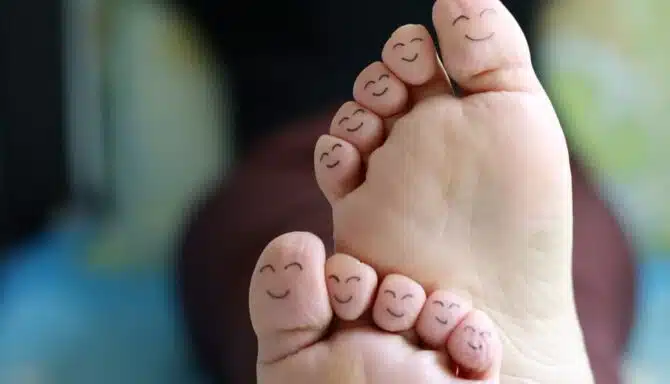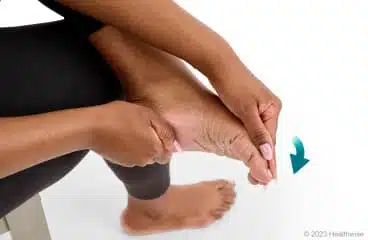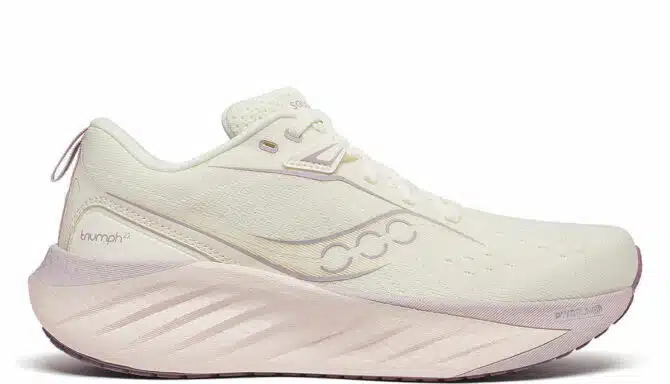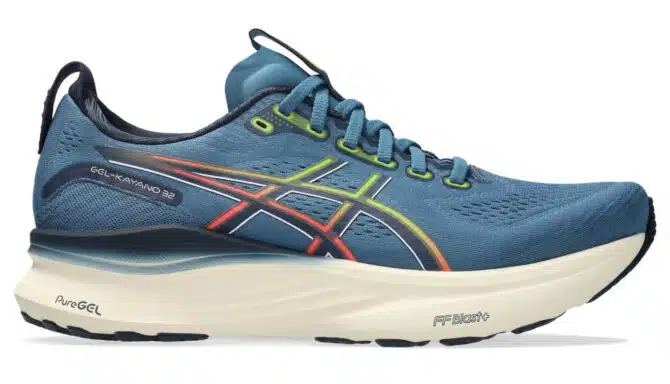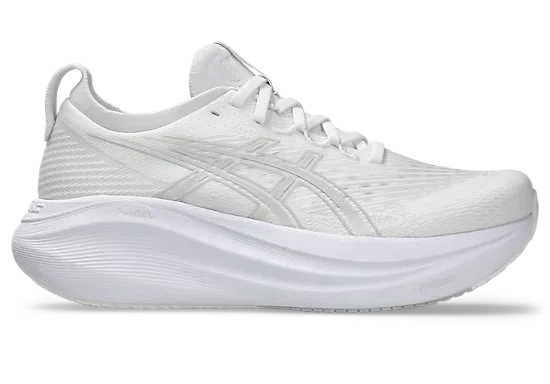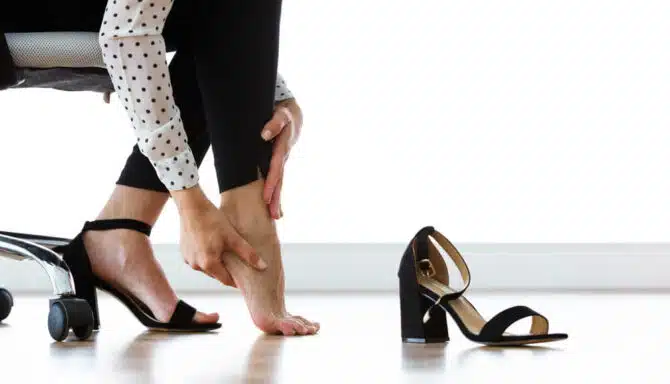November 27, 2025
Your feet do a lot for you — from getting you where you need to go to keeping you active and independent. But they’re often the most overlooked part of your self-care routine. Proper foot care isn’t just about keeping your feet soft or your nails neat; it’s about preventing pain, improving comfort, and supporting your overall health.
At Feet First Clinic in Toronto, our chiropodists treat everything from nail and skin concerns to pain and mobility issues. Here are the top five ways to take care of your feet to keep them healthy and strong all year round.
1. Keep Your Feet Clean and Dry
Healthy feet start with good hygiene. Wash your feet daily with warm water and mild soap, and don’t forget to clean between the toes. After washing, dry your feet thoroughly — especially between the toes — to help prevent fungal infections like athlete’s foot.
If your feet tend to sweat a lot, moisture-wicking socks or antibacterial foot deodorant powder can help keep them dry and fresh.
2. Moisturize to Prevent Cracked Heels and Dry Skin
Dry, flaky, or cracked skin on the feet can be uncomfortable and, if left untreated, may lead to infection. Applying a foot cream or urea-based moisturizer daily helps lock in moisture and keeps the skin soft and supple.
Focus on the heels and soles, but avoid putting lotion between the toes — excess moisture there can increase the risk of fungal infections.
If you have thick, rough skin or painful calluses, a chiropodist at Feet First Clinic can safely debride (shave down) the skin and recommend medical-grade moisturizers to help prevent recurrence.
3. Trim Your Toenails Properly
Toenail care is more important than it might seem. Cutting nails too short or rounding the corners can cause ingrown toenails, which are painful and can become infected. Trim your nails straight across and gently file any sharp edges.
If your nails are thick, discoloured, or difficult to trim, don’t force it. Our chiropodists have specialized tools to safely and comfortably trim thick toenails, and we can check for signs of fungal infections or other nail concerns.
Feet First Tip: The best time to trim your toenails is after a shower when they’re softer and easier to cut.
4. Choose Proper Footwear
Your shoes play a huge role in your foot health. Wearing shoes that are too tight, narrow, or unsupportive can lead to corns, calluses, bunions, or heel pain.
When buying new shoes, make sure:
There’s about a finger’s width of space between your longest toe and the front of the shoe.
The heel fits snugly without rubbing or pressure.
You can wiggle your toes freely.
If you have foot pain, flat feet, or high arches, custom orthotics may be a game-changer. At Feet First Clinic, our chiropodists assess your gait and foot structure to design orthotics that support your body from the ground up.
5. Schedule Regular Foot Checkups
Even if your feet feel fine, regular checkups can help prevent problems before they start. Chiropodists are trained to detect and treat a wide range of foot and nail conditions, including:
Ingrown and fungal toenails
Corns, calluses, and cracked heels
Plantar fasciitis and heel pain
Diabetic foot complications
At Feet First Clinic, we believe prevention is the best medicine. Routine foot care helps maintain comfort, mobility, and confidence — especially as we age or if we spend long hours on our feet.
Feet First Tip: If you notice pain, swelling, or changes in your toenails or skin that don’t go away, it’s time to book an appointment. Small issues can quickly become big problems if ignored.
October 30, 2025
Extensor tendonitis is a common foot condition that affects the tendons running along the top of your foot. These tendons connect your muscles to your toes and help lift your toes and foot during walking and other activities. When these tendons become inflamed or irritated, it can lead to pain and difficulty moving your foot comfortably.
What Is Extensor Tendonitis?
Extensor tendonitis refers to inflammation or irritation of the extensor tendons on the top of the foot. This condition often results from overuse, repetitive strain, or injury. People who are active in sports, wear tight footwear, or have certain foot structures may be more prone to developing extensor tendonitis.
Causes of Extensor Tendonitis
Overuse: Repetitive activities such as running, jumping, or walking long distances.
Improper Footwear: Shoes that are too tight or have insufficient space on the top can compress the tendons.
Foot Mechanics: Flat feet, high arches, or gait abnormalities can put extra strain on the tendons.
Injury: Trauma or sudden impact to the foot.
Underlying Conditions: Arthritis or inflammatory diseases may contribute to tendon irritation.
Symptoms of Extensor Tendonitis
Pain and tenderness on the top of the foot, especially over the affected tendon.
Swelling or redness along the top of the foot.
Difficulty lifting the toes or foot.
Pain worsens with activity and improves with rest.
Occasionally, a burning or tingling sensation.
Treatment Options
Rest and Activity Modification
Avoid activities that aggravate the pain and allow the tendon to heal.
Proper Footwear
Wear shoes with adequate space in the toe box and good support to reduce pressure on the top of the foot.
Ice Therapy
Apply ice packs to reduce inflammation and pain.
Physical Therapy
Stretching and strengthening exercises can improve tendon flexibility and foot mechanics.
Orthotics
Custom orthotics may help correct biomechanical issues that are causing excess strain on the extensor tendon and muscles on top of the foot.
Medication
Non-steroidal anti-inflammatory drugs (NSAIDs) can reduce pain and inflammation.
When to See a Specialist
If pain persists beyond a few weeks or worsens, consult a chiropodist or foot specialist for a biomechanical assessment and personalized treatment plan.
April 30, 2025
Finding the best neutral running shoes is an important “step” for runners who want a natural, supported stride. Neutral running shoes are designed for those who don't require extra corrective features and benefit most from balanced cushioning and stability. Many people also look for lightweight running shoes that deliver comfort and speed without feeling bulky. In this guide, we’ll help you find the right pair! Many of these shoes, and others, are available at our Toronto foot clinic, Feet First Clinic, and foot specialists like chiropodists and podiatrists often suggest them for people with a normal gait or who supinate.
https://www.youtube.com/shorts/0bVBNNUAUOc
What are Neutral Running Shoes?
To understand what neutral shoes are, it helps to look at different foot types and the way each moves during walking or running. Foot types are typically defined by the height of the arch and associated gait patterns:
Flat feet: Minimal or no visible arch, often leading to overpronation, where the foot rolls excessively inward during movement. Around 40% of runners overpronate, and without the right shoes, overuse injuries like plantar fasciitis can develop. Runners with flat feet should consider stability shoes, sometimes the more restrictive motion control shoe.
High arches: A very pronounced arch, often leading to underpronation (also called supination), where the foot rolls outward.
Normal arch: A moderate, well-formed arch that’s about “halfway full.” It supports a relatively neutral walking or running gait without excessive rolling inward or outward.
Neutral shoes are designed for individuals with a normal arch and a natural gait, meaning their foot doesn't overly roll in (overpronate). Neutral running shoes are also suitable for people with high arches who underpronate. These shoes prioritize cushioning and shock absorption over structural support or corrective features, offering a more flexible and natural ride.
Unlike stability shoes or motion control shoes, which are more rigid, built to control motion and guide the foot into proper alignment, neutral shoes allow the foot to move more freely and comfortably, simply because this is okay for a normal arch and a normal gait doesn’t need guidance. The focus is on lightweight materials, responsive cushioning, and smooth transitions from heel to toe.
Comfortable neutral shoes are ideal for runners or walkers who have an efficient gait cycle and don’t require additional support to prevent injury. They can also be a good option for individuals with high arches, who often benefit from extra cushioning to protect against the increased impact that comes from less natural shock absorption.
How Do Neutral Shoes Prevent Foot Pain?
Neutral shoes help prevent foot pain by offering ample cushioning and promoting the foot’s natural motion without interference. For people with normal arches and a stable gait, or high arches, too much corrective structure can actually cause discomfort or alter natural biomechanics. Neutral shoes support a smooth stride while providing the soft, consistent underfoot feel needed to absorb the repeated impact of walking or running.
One of the key ways neutral shoes protect against foot pain is by reducing the jarring forces that travel up through the feet and legs with every step via shock absorption. High-quality cushioning materials, such as EVA foam or advanced proprietary foams, spread out impact forces and minimize stress on the heels, arches, and forefoot. This protection helps prevent common issues like plantar fasciitis (heel pain), metatarsalgia (pain in the ball of the foot), and even joint discomfort in the knees and hips.
Additionally, neutral shoes are often lighter and more flexible than stability or motion control shoes, which can reduce fatigue over longer distances. With less weight to lift and more natural foot mechanics, you can stay active longer and more comfortably. The result? A smoother, more enjoyable experience every time you move. And your feet aren’t too tired at the end of the day!
Top Neutral Running Shoes in 2025
Where do you start when you want to find the right pair? Luckily, we’re going to talk about some of the best options. Some of these are available at our Toronto foot clinic, Feet First Clinic, and come highly recommended by chiropodists and podiatrists. You can always call or visit us to determine what high quality footwear we have in stock at any given time.
ASICS Gel-Nimbus 27
The ASICS Gel-Nimbus 27 is a premium neutral running shoe designed for comfort and durability. It features a high stack height of 43.5 mm at the heel and 35.5 mm at the forefoot, providing ample cushioning for long-distance runs and everyday walking. The midsole utilizes ASICS' FF Blast Plus Eco foam, offering a soft yet responsive ride. A PureGel insert under the heel enhances shock absorption, which reduces joint strain. The engineered jacquard mesh upper is both breathable and supportive, contributing to the shoe's overall comfort. Despite its cushioning, the Gel-Nimbus 27 maintains a relatively lightweight profile, making it suitable for daily training.
This model is ideal for runners seeking a plush, cushioned experience during long runs or recovery days. But it's not just for runners! It's also ideal for people with foot pain, arthritis, or who want to keep their feet comfy and supported as they go about their daily activities. Its premium cushioning makes it feel like you're walking on a cloud. Whether you're training for a marathon or enjoying a leisurely jog, this shoe offers the support and comfort needed to keep you going. It's also fantastic for non-runners who just want a comfortable walking shoe.
Saucony Triumph 23
The Saucony Triumph 23 is another top-tier neutral running shoe with a stacked heel, known for its plush cushioning and smooth ride. It features PWRRUN+ foam in the midsole, delivering a soft yet responsive feel underfoot. The shoe's geometry promotes a natural stride, and the updated upper provides a secure, comfortable fit. Its durable outsole offers reliable traction, ensuring confidence on various terrains. Overall, the Triumph 23 combines cushioning, support, and durability, making it a versatile choice for runners and non-runners alike. The cushioning also delivers great shock absorption, while the mid-rocker sole reduces strain on the forefoot - great for people with high arches and joint rigidity.
This shoe is particularly well-suited for runners who prioritize comfort and support over speed. The Triumph 23's design caters to those who spend extended periods on their feet, whether during training sessions or daily activities. Its combination of cushioning and stability makes it a reliable choice for a wide range of runners.
Brooks Ghost
For those who don’t want a stacked heel, the Brooks Ghost is renowned for its balanced cushioning and reliable performance. This neutral running shoe offers a 12 mm heel-to-toe drop, catering to runners who prefer a traditional feel. Its DNA LOFT v3 midsole provides a smooth, responsive ride, while the engineered mesh upper ensures breathability and comfort. The durable rubber outsole enhances traction, making it suitable for various surfaces. The Ghost 16's consistent performance and comfort make it a go-to option for daily training and long-distance runs.
Ideal for runners seeking a dependable and straightforward shoe, the Ghost 16 delivers a comfortable experience without unnecessary frills. Its design focuses on providing a smooth transition from heel to toe, accommodating a variety of running styles. Whether you're a seasoned runner or just starting out, the Ghost 16 offers the support and comfort you need. It's also great for people who wear custom orthotics.
April 24, 2025
If you’re dealing with flat feet and overpronation, or sometimes other foot issues, finding the best stability running shoes can provide the support and comfort you need. These shoes are designed to help keep your feet properly aligned and reduce strain, making them perfect for running or everyday wear. In this guide, we’ll help you find the right pair and keep you moving with a little more peace of mind.
What are Stability Shoes?
https://www.youtube.com/shorts/TnDaLrqYTac
To understand what stability shoes are, it’s important to explain the different foot types and the corresponding, suitable shoes that accommodate each type. Foot types are characterized by how pronounced the arch is, as well as any associated gait abnormalities (walking patterns):
Flat feet: When you have a minimal or non-existent foot arch, or when your footprint looks like a complete foot. The foot rolls excessively inward when it’s in motion (overpronation). It is often linked to the development of plantar fasciitis.
High arches: When your arch is very pronounced and you see very little of your footprint. Sometimes associated with underpronation, or when the foot rolls excessively outward when it’s in motion.
Normal arch: When your arch is about halfway “filled” when you look at it from a footprint perspective. There are generally no issues with overpronation or underpronation.
Why Stability Shoes?
Think of stability shoes as running shoes for flat feet. They are specifically engineered to help people who overpronate, providing enhanced support and alignment during movement. They are more rigid, rather than flexible, to ensure the foot stays securely in place when it propels forward. That said, thanks to technological innovation, many stability running shoes on the market offer the necessary correction without feeling restrictive.
More specifically, unlike neutral running shoes (which tend to be more flexible and are suited for those with a normal gait or high arches), stability shoes guide the foot into a more neutral position. This is achieved through features like firmer midsoles and supportive arch structures that counteract the inward rolling motion characteristic of overpronation. By doing so, stability shoes help distribute pressure more evenly across the foot, reducing strain on muscles and ligaments.
This design not only improves comfort during activities like walking or running; it also plays a crucial role in preventing injuries commonly associated with overpronation, such as plantar fasciitis and shin splints.
If you have severe overpronation, motion control shoes offer an even higher level of support. These shoes are constructed with stiffer materials and additional structural components, such as reinforced heel counters and medial posts, to limit excessive foot movement.
While some motion control shoes may feel heavy, they provide maximum control, ensuring the foot maintains proper alignment throughout the gait cycle. This level of control is particularly beneficial for those who require substantial correction to prevent overuse injuries. Motion control shoes can significantly reduce the risk of pronation-related injuries in recreational runners and can be an effective injury prevention strategies.
How Do Stability Shoes Prevent Foot Pain?
Stability shoes help prevent foot pain by offering targeted support where your feet need it most—especially in the arch and heel areas. When your foot rolls too far inward, it puts extra strain on the muscles, tendons, and ligaments that work to keep your stride in check. Over time, this can lead to discomfort or injuries like plantar fasciitis, shin splints, or achy knees. Stability shoes are designed to keep that motion in check, gently guiding the foot to move in a more efficient and aligned way. This takes the pressure off the wrong areas and helps absorb shock more evenly across your foot.
Another key way stability shoes help reduce foot pain is by minimizing the stress placed on your body with every step. Features like firm medial support and structured cushioning help maintain better posture and balance, especially during long walks or runs. That added support means your feet aren’t constantly working overtime to stabilize themselves, which can help you stay active longer without feeling sore. At the end of a long day, your feet will thank you!
The Best Stability Running Shoes
Where do you start when you want to find the right pair? Luckily, we’re going to talk about some of the best options. Some of these are available at our Toronto foot clinic, Feet First Clinic, and come highly recommended by chiropodists and podiatrists. You can always call or visit us to determine what high quality footwear we have in stock at any given time.
ASICS Gel-Kayano 32
The ASICS Gel-Kayano 32 is a go-to for runners seeking plush support and a smooth ride. This latest version keeps the high-level stability the Kayano line is known for, while dialing up the comfort with soft cushioning and a breathable upper. It’s ideal for daily training or long runs when your feet need some extra TLC.
If you're browsing for the top running shoes for stability, the Gel-Kayano 32 should be on your radar. It contains ASICS' 4D Guidance technology. This features a "pod" that acts as a medial post to control the movement of the foot and ankle and prevent overpronation. The medial post is made of a responsive material that will respond to your foot's motion and prevent over-correction. In addition, unlike other stability models with a stacked heel, the Gel-Kayano is structured to "cradle" the foot. This gives all cushioned benefits of a stacked heel and mid-rocker sole, without compromising stability and balance.
Whether you're logging serious miles or just want a reliable everyday trainer, this one's a solid pick.
Saucony Hurricane 24
The Saucony Hurricane 24 is a max-cushion stability shoe built for comfort and support. It features a plush PWRRUN PB midsole and a wide base that keeps you steady, even on longer runs. The shoe is a bit on the heavier side compared to other shoes, but it delivers a smooth, stable ride that's easy on the legs.
For those looking for Stability running shoes for overpronation, the Hurricane 24 is a standout option. It provides excellent support without feeling too rigid, making it great for runners who need a bit more structure. Just keep in mind that it's not the best choice for speedwork due to its weight.
ASICS GT-2000
The ASICS GT-2000 is a reliable stability shoe that offers a balanced blend of cushioning and support. It's designed for runners who need moderate stability without sacrificing comfort. The shoe provides a smooth transition from heel to toe, making it suitable for daily training.
While it may not have the plushness of the Kayano, the GT-2000 is a versatile option for runners seeking a more responsive feel. It's a solid choice for those who need an athletic stability running shoe that doesn't feel too bulky.
Brooks Glycerin GTS
The Brooks Glycerin GTS is a max-cushion stability shoe that combines softness with support. It features Brooks' GuideRails technology, which helps keep your stride aligned without being intrusive. The shoe offers a plush ride that's perfect for long runs or recovery days.
If you're looking for a stability shoe that doesn't skimp on comfort, the Glycerin GTS is worth considering. It's designed to provide a smooth, cushioned experience while still offering the support needed for overpronators. Just be aware that it's more suited for easy runs rather than speed sessions.
https://www.youtube.com/shorts/mxrb9Qihtiw
February 6, 2025
The HOKA trend is the rise in popularity of HOKA's high-stack running shoes, or running shoes with extra cushioning, extra height, a high heel stack and a rocker sole. They aren’t the first popular running shoes trend, and they certainly won’t be the last. Although people exclusively associate this type of trendy running footwear with HOKA, many other brands like ASICS and Saucony make footwear with the same high-stack shoe technology. Today, we’re diving into why these shoes offer more than just style—they come with real benefits. But they’re not for everyone, so we’ll also cover who should steer clear of this particular design.
https://www.youtube.com/shorts/ySn158c143c
What are High-Stack Running Shoes?
High-stack running shoes, often called “super cushioned” or even “chunky,” by those who don’t know the terminology. They have transformed modern footwear design for many high-quality brands. Often attributed to HOKA for “starting the craze," these shoes feature thick midsoles packed with advanced cushioning foam technologies that enhance energy return, provide sufficient shock absorption, and improve comfort over long distances.
Despite their benefits, high-stack shoes aren’t without controversy. Some runners prefer lower-profile shoes for better ground feel and stability, while others find high-stacks beneficial for injury prevention and endurance. Their chunky aesthetic has also sparked mixed opinions—some love the bold look and the added height without having to wear a true high heel while others see them as clunky.
High-Stack Shoe Technology
The defining feature of high-stack shoes is their thick midsole, which can measure over 40mm in some models. These midsoles use lightweight, resilient foams such as Pebax or EVA blends that provide exceptional cushioning while maintaining responsiveness. The goal is to reduce muscle fatigue by absorbing more impact, allowing runners to maintain performance with less strain on joints and soft tissues.
Another key factor in their performance is the rocker geometry, rocker bottom shoe or rocker sole—curved soles designed to promote a smooth heel-to-toe transition. This feature helps conserve energy, particularly during long runs, by reducing the work done by the calves and ankles.
ASICS Gel Nimbus 27
The Benefits of High Stack Shoes
High-stack running shoes offer several benefits for foot health, especially for individuals dealing with arthritis, diabetes, and metatarsalgia. Here's a breakdown of their advantages:
Enhanced Cushioning: High-stack running shoes feature extra cushioning, which absorbs shock and reduces impact on the feet during movement. This is particularly beneficial for people with conditions like arthritis, where joints are sensitive to pressure and movement.
Pressure Redistribution: The additional cushioning and rocker sole work together to redistribute pressure across the foot. In the case of diabetes or metatarsalgia, this can help alleviate excess pressure on specific areas of the foot, such as the forefoot or metatarsal heads. For those with diabetes, reducing pressure can help prevent the skin damage that leads to ulceration, as it lowers the risk of tissue damage and enhances comfort. (However, people with diabetes and balance issues may wish to avoid rocker soles - more on that later).
Joint Protection: The rocker sole limits the motion of foot joints. This helps manage conditions like osteoarthritis and hallux limitus (big toe arthritis). By restricting unnecessary movements, it prevents excessive strain on the joints, protecting them from further damage. This is especially useful for the big toe joint, where excessive motion can lead to increased pain and discomfort. It's also highly beneficial for people with high arches. People with high arches tend to experience joint rigidity (particularly hallux limitus) and lack of shock absorption. The rocker sole offsets the restricted mobility.
Improved Biomechanics: The curved design of the rocker sole encourages a smoother, more efficient gait. The shape propels the foot forward with each step, facilitating a natural walking motion and reducing strain on the joints. This is particularly beneficial for those with ankle, midfoot, or big toe arthritis, as it helps maintain normal walking patterns without overloading the affected areas.
Pain Reduction: Rocker soles are especially effective in reducing pain associated with conditions like hallux limitus and metatarsalgia. By minimizing motion at the big toe joint and redistributing pressure under the ball of the foot, these shoes can significantly reduce the discomfort felt during daily activities like walking or standing.
https://www.youtube.com/shorts/qByZ0GRFoaQ
When to Avoid High Stack Shoes
Here are some individuals who might want to avoid them or consult a foot care professional, like a Chiropodist or a Podiatrist, before wearing them:
People with Balance Issues
The rocker sole on high-stack shoes can make them less stable for individuals who struggle with balance or proprioception (awareness of body position). Those at a high risk of falls, such as elderly individuals or those with severe neuropathy, may find that the rocker sole from stacked heels throws off their balance.
People with Diabetes
Complications from diabetic neuropathy can lead to balance issues. Therefore, while the cushioning of a stacked heel is great for addressing joint issues, the "rolling" effect of the rocker sole is not suitable for people with diabetes.
Individuals with Ankle Instability
The increased midsole height and curved design can reduce ground feel and make it easier to roll an ankle, especially on uneven surfaces. People prone to ankle sprains or with a history of ankle instability might be better suited to lower-profile shoes with more lateral stability, or stability shoes with posting in the midsole (like the ASICS Gel-Kayano), which is constructed to cradle the foot and control ankle movement. In shoes like the ASICS Gel-Kayano, even though there is a stacked heel, the foot actually sits below the sole to provide stability.
https://www.youtube.com/shorts/osC-UmBtgNk
January 9, 2025
Living with high arches can be a challenge, but if you pay attention to your foot health, you can manage them effectively. Let’s explore what high arches are, their impact, and our top 4 tips for living with high arches.
What Are High Arches?
https://www.youtube.com/shorts/13rmyA18ZzY
High arches (pes cavus) is a condition where one has - you guessed it - abnormally high foot arches. They are essentially the opposite of flat feet, which are characterized by having a minimal or non-existent arch. High arches may be hereditary or caused by neurological disorders such as Charcot-Marie-Tooth disease.
From a biomechanical perspective, the raised arch reduces the surface area in contact with the ground, which can result in an uneven distribution of weight across the foot. High arches often place excessive pressure on the ball and heel of the foot, leading to discomfort, instability, potential injuries and chronic foot conditions. High arches also impairs shock absorption, which causes progressive wear-and-tear on the joints over time.
Side effects of high arches include foot pain, issues like calluses and hammertoes, and an increased risk of ankle sprains. Individuals can also develop conditions like plantar fasciitis (this can also frequently occur in people with flat feet), or Achilles tendonitis due to the strain placed on the muscles and ligaments. The lack of shock absorption can also reverberate up the body and lead to joint disorders like arthritis.
High arches are associated with supination, also called underpronation, a condition where the foot rolls outward during movement. This gait pattern places additional stress on the outer edges of the foot and ankle, leading to instability and overuse injuries. Consequently, individuals with high arches should pay close attention to their walking or running patterns to prevent long-term complications.
High arches can also lead to changes in posture and gait. This, combined with the lack of shock absorption, may result in secondary issues such as knee, hip, or back pain over time.
Tips for Living with High Arches
https://www.youtube.com/shorts/2et0ZUSx4OM
Living with high arches requires thoughtful adjustments to your daily routine and habits. Here are some ways to keep your feet comfortable and supported:
1. Choose the Right Footwear
Proper footwear is essential for managing high arches. Opt for shoes with ample shock absorption, arch support and cushioning. Shoes with flexible midsoles or rocker soles can also be very helpful: People with high arches tend to have rigidity in the toes and ankles due to joint wear-and-tear, which means the toes and ankles do not flex as much as it should during the gait cycle. A flexible midsole and rocker sole counteracts this and make movement easier. Likewise, people with high arches should avoid high heels, rigid soles, and unsupportive flats, which can exacerbate discomfort.
Due to supination, people should look for cushioning running shoes. These provide balanced cushioning and plenty of shock absorption and flexibility to support the foot’s natural motion and healthy biomechanics. This design helps distribute pressure evenly, enhances comfort, and reduces the risk of injury.
2. Wear Custom Orthotics
Custom orthotics are a valuable tool for redistributing pressure evenly across the foot. You can work with a specialist, like a podiatrist or chiropodist, at a foot clinic to create orthotics tailored to your specific needs.
Scientifically, custom orthotics help correct abnormal biomechanics, such as excessive supination, by stabilizing the foot and encouraging a more neutral gait. They can also provide added cushioning to reduce the impact of your stride on your joints. Over time, this can alleviate pain, reduce fatigue, and prevent the development of secondary issues in the knees, hips, or lower back.
3. Maintain a High Arch Foot Care Routine
Foot baths and massages can soothe foot pain, relax the muscles in your feet and boost blood circulation.
Soak your feet in warm water with Epsom salts, or foot bath products from reputable companies like Gehwol, to alleviate tension. Gehwol products, such as their Herbal Foot Bath, are available to buy at our Toronto foot clinic, Feet First Clinic!
Gently massage the arch, heel, and toes to improve circulation and relieve tightness. Read this article to learn how to give yourself a foot massage from home.
4. Try Stretching and Strengthening Exercises
Foot stretches and exercises play a crucial role in managing high arches by improving flexibility, reducing muscle tightness, and promoting better blood circulation in the feet. High arches can lead to stiffness and imbalances in the tendons and muscles, increasing the risk of discomfort and injury. Over time, these stretches can support better alignment and strengthen the foot's ability to handle daily stress, making them an essential part of high arch foot care.
Here are some simple routines you can try today!
Toe Flex and Raise: While standing, plant your toes and lift your heels off the ground. Hold for 15-30 seconds and repeat 5 times.
Seated Towel Stretch: Loop a towel around your foot and gently pull it toward you, holding for 15-30 seconds.
Pen Pick-ups: Stay seated. Then, lay three pens, or similarly shaped objects, in front of you–spaced apart evenly. Using your toes, pick up each pen and place it in a bowl.
Seated Toe Pulls: Sit on a chair and cross one ankle over the opposite knee. Grab the top of your foot and gently pull it toward your body until you feel a stretch on the top of your foot. Hold for 15-30 seconds and repeat 2-3 times per foot.
https://www.youtube.com/shorts/-EeyHTdkrEs
Additional High Arch Pain Relief Tips
More practical approaches for high arch pain relief include:
Ice Therapy: Apply an ice pack to sore areas for 15-20 minutes to reduce inflammation and soothe discomfort. If your feet are particularly painful, take this one step further by practicing the RICE method (Rest, Ice, Compression and Elevation).
Supportive Inserts: Use over-the-counter insoles with firm arch support. A good choice for high arches is the Superfeet Green or the Superfeet Run Cushion High Arch insoles. However, talk to a podiatrist or chiropodist about if you need more customized support from orthotics.
Medication: Nonsteroidal anti-inflammatory drugs (NSAIDs) may help manage pain.
Seek Professional Help: Visit a podiatrist or chiropodist for a biomechanical assessment to determine how prominent your high arches are, how they are affecting your body, and any contributing biomechanical factors. These foot specialists can also fit you for custom orthotics, provide shoe recommendations and curate a full treatment plan.
When to See a Specialist For High Arches
If high arches are causing persistent discomfort or limiting your mobility, it’s essential to seek professional advice. As we mentioned, visiting a foot clinic ensures access to personalized treatment plans. Consulting a foot specialist is especially important if you notice:
Increased frequency of ankle instability or sprains.
Development of deformities like hammertoes, claw toes, or bunions.
Chronic pain that makes simple activities like walking increasingly difficult.
A foot specialist can recommend the appropriate treatments, depending on the severity of your condition. They may also suggest physical therapy to improve balance, coordination, and overall foot function.
Regular check-ups and assessments with a podiatrist or chiropodist can prevent seemingly minor issues from becoming major concerns. Don’t hesitate to seek their expertise!
https://www.youtube.com/shorts/XZUfVhny5pY
